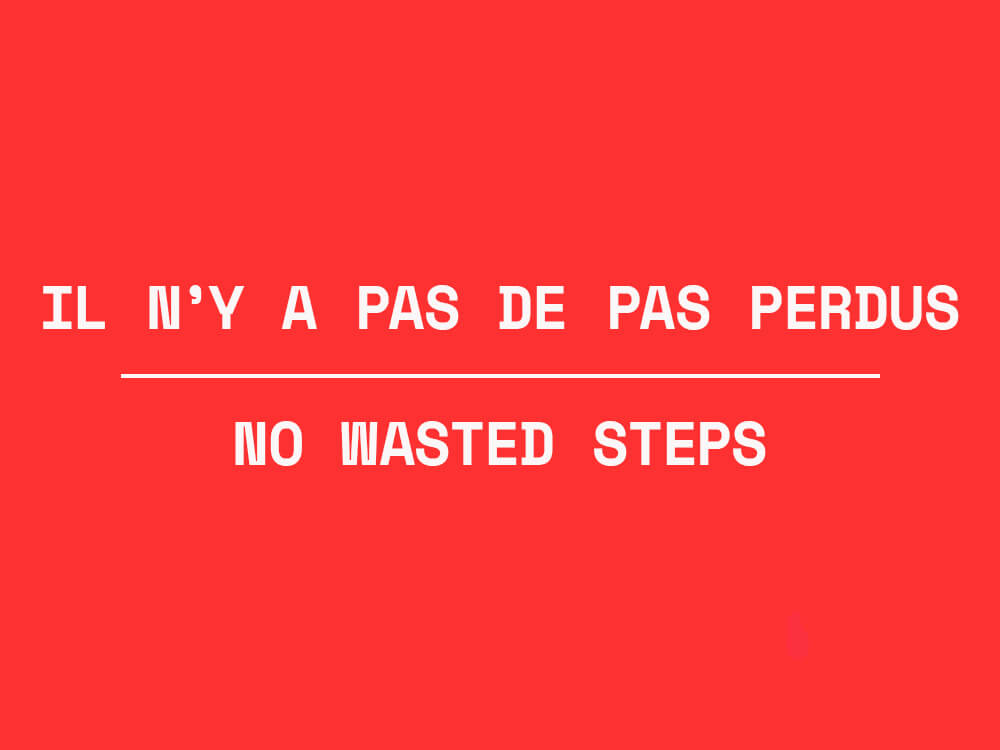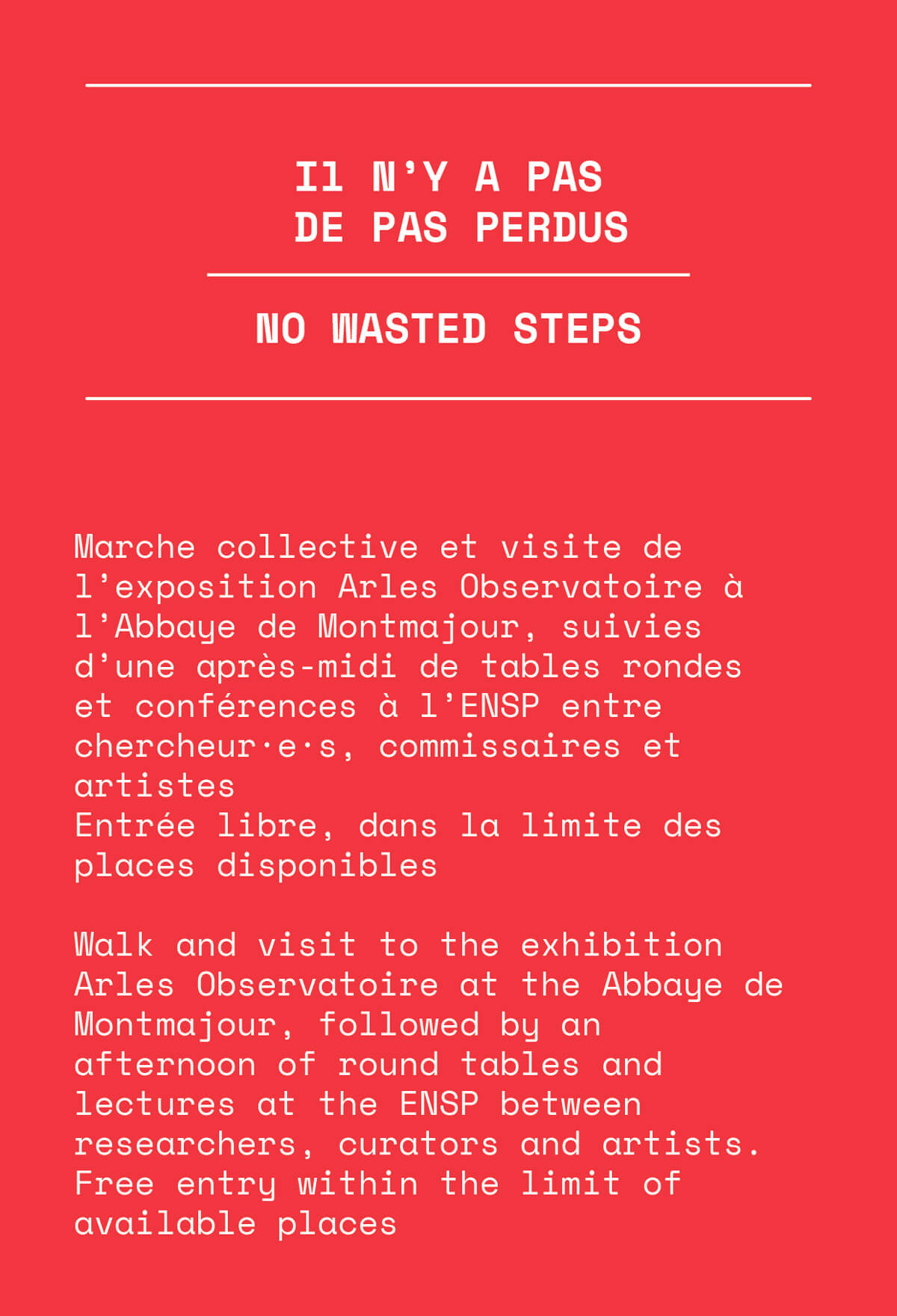No Wasted Steps
Study Day
Walk and visit to the exhibition Arles Observatory at the Abbey of Montmajour, followed by an afternoon of round tables and lectures at the ENSP between researchers, curators and artists.
Free entry within the limit of available places
Walking has often been represented in Western art, but it has also been used as a practice by artists, especially from the early 20th century onwards.
This event, a day of walking, visits and discussions, takes us back to the most simple of gestures – putting one foot in front of the other – to analyse a number of current issues.
INTERVENTIONS
In French and English with simultaneous interpretation
→ 8:30 à 12 a.m. | ENSP → Abbey of Montmajour
Collective walk and visit to the exhibition Arles Observatory at the Abbey of Montmajour
8:30 a.m. | Departure from ENSP for a collective walk to the Abbey of Montmajour (5 km) guided by Tadashi Ono, artist and teacher at ENSP – meet in front of ENSP at 8:15 am with a bottle of water and sun protection!
From the ENSP to the Abbey, we walk for about 1:30 to 2 hours. The path is not difficult, but one section (the old railway line) is slightly overgrown with brambles, grasses and thistles. If you don’t like being tickled by these plants, remember to cover your legs and wear good footwear.
10h | Presentation and visit of the exhibition dedicated to the pedagogical project Arles Observatory with Gilles Saussier and Tadashi Ono, artists and teachers at ENSP, and ENSP students.
→ From 2 p.m. | ENSP ARLES
Introduction
by Véronique Souben, Director of the ENSP
and Mabe Bethônico, Artist, research lecturer at the ENSP and the HEAD, Geneva (Switzerland)
→ A look at the figure of Gradiva, The woman who walks
by Thierry Davila, Art historian and philosopher, art critic and museum curator. He teaches at the HEAD, Geneva (Switzerland)
→ The meaning and pedagogical use of walking through the borders of contemporary spatiality
by Giulia Fiocca & Lorenzo Romito, members of the Stalker Collective.
They teach the Stalker module as part of the Environmental Humanities Master’s programme at the University of Rome 3, and Public Art at the Naba, the New Academy of Fine Arts in Rome. Lorenzo Romito is also Professor in the Department of Spatial Strategies and Design at KunstUni, Linz (Austria) and Visiting Professor at the Chair of Italian Culture at ETH, Zurich (Switzerland).
→ How walking allows the creation of images
by Katja Stuke & Olivier Sieber, present the role of walking in their photographic production.
They live and work in Düsseldorf (Germany). They cover a broad spectrum of identities: photographer and artist, curator and initiator of exhibitions, designer and publisher of artists’ books. Since 2005, they have regularly worked abroad in artist residencies in Osaka, Tokyo, Cité International des Arts Paris, Chicago, Rotterdam, Chongqing, Sarajevo and Toronto.
→ Conviviality and free tour of the exhibitions Laurent Montaron, To Tell a Story and Les diplômés 2024


